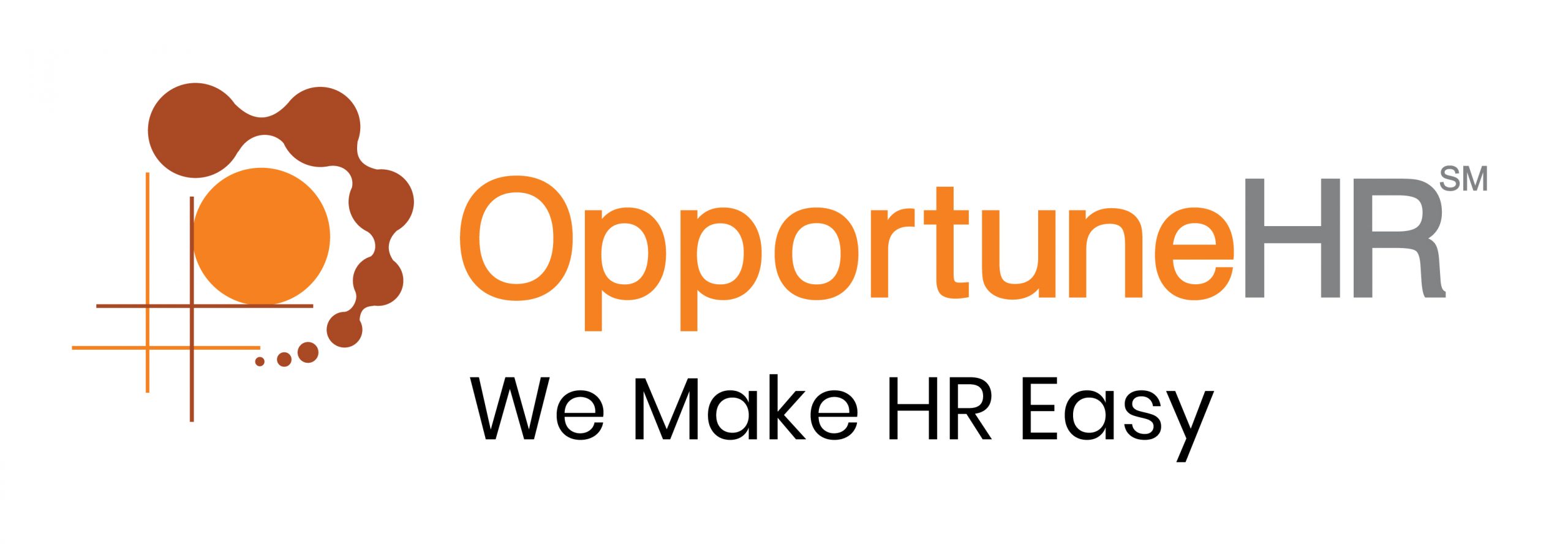HRMS software increases efficiency and productivity of HR processes and saves money for the organisation. Now it’s an established fact.
Gone are the days when SME business owners used to think about whether to go for an HRMS software or not. In today’s world, organisations are gearing to work with AI and other advanced technologies, and HRMS is not a question of choice any more.
Now there is HRM software for small businesses, too. We mean, HR software specifically created for small businesses!
So there is no excuse. Those who will not get on the HR automation will soon be left far behind.
The real questions business owners and HR managers of SME and startup businesses are asking are:
1) How does human resource management system help to increase productivity and profitability?
2) How to improve productivity through HRIS software system?
3) How will a good HRIS software increase employee motivation?
In this blog post we are sharing with you how a human resource management system can boost productivity and efficiency of the HR department in your organisation.
The short and sweet answer is, a good HRMS and payroll software plays a crucial role in streamlining all the HR processes in your organisation. This will help —
- Speeding up HR operations
- Accuracy and precision in various payroll calculations.
- The workplace will become more compliant.
- Empowers employees through employee self-service dashboard.
- Liberates HR from mundane inquiries and repetitive tasks.
- The HR software makes people accountable, and fosters discipline in the organisation.
That’s the big picture.
Now let’s see in detail how HRMS software streamlines various HR processes and increases efficiency.
Better Employee Data Management
The HRMS platform provides a centralized platform for employee database. It makes HR-forwork easier and faster by:
- Providing quick access to employee information. All employee data, including personal information, employment history, performance reviews, and training records are available with a few clicks of the mouse.
- Minimizing errors and duplication of data. The HRIS software system eliminates the need for paper-based files and spreadsheets, reducing the risk of human errors and data duplication.
Such databases make talent management and document management much easier.
Streamlined Recruitment
The Human Resource Management System enhances efficiency in recruitment and is widely used for this purpose. Here are some ways it makes a difference–
- Centralized Database allows recruiters and HR personnel to easily access and manage candidate data, making the recruitment process more streamlined and organized.
- Applicant Tracking: Recruiters can track the progress of an applicant through the recruitment cycle. They can manage applications, schedule interviews, and communicate with candidates all within the system. This simplifies the hiring process and saves time.
- Automated Screening: HRMS includes automated screening features that help filter out unsuitable candidates.By setting specific criteria, recruiters can narrow down the number of promising applicants and can focus on candidates who meet the necessary qualifications. This saves time and effort during the initial stages of recruitment.
- Efficient Communication: HRMS facilitates effective communication between recruiters, hiring managers, and candidates.Through the system, recruiters can send automated emails, schedule interviews, and share important updates with candidates. This ensures that everyone is on the same page.
Professional Employee Onboarding
Without HRMS onboarding used to be a long and complicated process: Filling forms and gathering information in multiple heads. But with HRMS, things are super easy. HRMS is like a digital assistant that keeps track of all the important information needed for onboarding.
When a new employee joins, they can simply enter their information into the HRMS system, and upload relevant documents. This speeds up the process and saves a lot of HR teams’ time and effort.
HRMS also helps in coordinating different tasks during the onboarding process. For example, the HRMS can remind the HR team to create email accounts or set up training sessions for the new employee. This way, nothing gets forgotten or overlooked.
New employees are curious about the company policies, and HRMS allows them to access important information themselves. They can view their payslips, benefit plans, check their work schedule, and holiday calendars. This makes things convenient for everyone.
HRMS increases efficiency in the onboarding process by saving time, reducing errors, and making information easily accessible.
HRMS software is a must for SME organisations, because the HR bandwidth is short and formal onboarding processes are not set up.
Real-time Time and Attendance management
Time and attendance management can be tedious without automated systems. But easy with HRMS system. It helps the HR teams in the following ways:
- Seamless integration of biometric devices and attendance software tells HR managers real-time employee strength at any time on the shop floor or the factory floor. It helps them in better shift planning.
- Multiple modes of attendance tracking: HRMS allows employees to clock in and out time using various methods such as biometric devices, mobile apps, or web-based portals. This eliminates the need for manual attendance registers and reduces the chances of errors.
- Also, features like geofencing help the HR team in managing the attendance of field-employees,
and employees working from home. No separate calculations and monitoring are required. Everything is integrated into a single system. - Real-time Attendance Monitoring: The platform provides real-time visibility into employee attendance data. So, HR teams can easily monitor attendance records, track late arrivals or early departures, and identify patterns or trends.
Here are some more ways the HRMS enhances the productivity of the HR team–
- Overtime Tracking: HR teams can track and manage employee overtime hours. The software calculates overtime based on predefined rules and generates reports for payroll processing.
- Attendance Reporting and Analytics: With a few clicks HR teams can generate attendance reports, absenteeism reports, late arrival reports, and more. These insights help in identifying attendance patterns, addressing attendance issues, and making data-driven decisions.
- Integration with Payroll: The platform seamlessly integrates with payroll systems, allowing HR teams to streamline the attendance data transfer for accurate payroll processing.
- Notifications and Alerts: A good HRMS solution sends automated notifications and alerts to employees and managers for various attendance-related events such as late arrivals, missed clock-ins, or pending leave requests.
Online Leave Management
Employee self-service dashboards are a great help here. Employees can request leaves and managers can approve or reject them on the system itself. The system automatically updates the attendance records based on approved leaves.
- Employees and managers can apply and approve leave through their individual apps, even when they are travelling or working from home.
- HRMS can take care of various kinds of leave types as per the configuration.
- A good HRMS can tackle multi-location holidays and leave policies well.
One Click Payroll Generation
The payroll generation is a complex task. Even experienced payroll managers make mistakes. These can happen due to complexity of the task, involvement of multiple departments and documents. But payroll management modules make it so much easier. And error free.
Payroll is one area where efficiency is enhanced and can be seen immediately.
Here are the ways payroll efficiency is enhanced by implementing an HR payroll module–
- Automated Payroll Processing: The platform automates the payroll process, eliminating manual calculations and reducing the chances of errors. This streamlines the payroll process and saves time.
- Time and Attendance Tracking: Integration of attendance management and payroll ensures accurate recording of employee hours, reduces time theft, and simplifies payroll calculations.
- Compliance and Tax Management: A good payroll software, like OpportuneHR keeps up-to-date with payroll regulations and tax laws, and ensures compliance.
- It automates tax calculations, deductions, and filings, reducing the risk of penalties.
So the HR team doesn’t need to go through all the statutory compliance changes and updates. Saves their time, and helps them achieve much more in other areas of HR function. - Reporting and Analytics: The platform generates comprehensive payroll reports and analytics, providing insights into labour costs, overtime expenses, and other payroll-related metrics. This helps in identifying areas for improvement and optimizing payroll processes.
Learn More About Payroll Management System
How a good HRMS and payroll software streamlines payroll operations?
Here are some examples from OpportuneHR.
- One Click Payroll Generation: The Opportune payroll system software is always ready, allowing you to generate payroll in real time. You have the flexibility to choose any day for salary disbursement.The process is fast and accurate, ensuring timely and error-free payroll processing.
- Highly Configurable Payroll System: With OpportuneHR, you can customize the payroll system according to your specific requirements and Indian payroll compliances. You can define various parameters such as salaries and variable pays based on grades and job roles. The system also supports flexi-CTC, taxations, benefits, and provides detailed payslips.In fact, OpportuneHR comes to you pre-configured, as per your requirements. So, the HR team can simply begin to use it!
- Payroll Dashboard: The comprehensive payroll dashboard provides a holistic view of all payroll management aspects. HR managers can easily track new joining, exits, full and final settlement, arrears, increments, and more.The dashboard also enables monthly payroll comparisons, payroll trends analysis, and identification of non-compliances.
- Payroll Controller: The payroll controller feature allows the HR managers to review the final salary register and lock the payroll for the month.And the payroll can be seamlessly integrated with the accounting system through JV (Journal Voucher) posting. And, the system facilitates compliance payments, quarterly TDS (Tax Deducted at Source), and provides payroll cost analysis.Now think, how much time would it take for the HR team to perform these intricate tasks manually?HRMS, HRIS, Human resource management system– Whatever you call it– HR automation is a great help to HR teams in SME as well as big organisations.
Streamlined Performance Management System
Performance management is a crucial aspect of HR processes. HR software provides tools for increasing efficiency and productivity in performance management.
1.Automated Performance Reviews:
Employees can easily access and complete their assessments online. It saves time and reduces paperwork. Automated reminders ensure timely completion, fostering accountability and efficiency.
2.Real-time Feedback and Goal Tracking:
HR software facilitates continuous feedback by enabling managers and employees to share comments and updates in real-time. This fosters a culture of prompt recognition and corrective action. Additionally, goal-tracking features empower employees to track their progress, driving higher engagement and productivity. Employee development becomes an ongoing activity.
3.Data-driven HR Analytics:
By leveraging sophisticated analytics tools, organisations can gain valuable insights into performance trends, identify skill gaps, and make informed decisions. These insights help HR professionals to develop customised training initiatives, and succession planning, resulting in improved performance and career growth opportunities.
4.Streamlined Performance Improvement Plans:
For employees who need additional support in reaching their performance goals, HR software enables HR professionals to create customized plans, set specific targets, and track progress.
This streamlined approach enhances accountability, increases chances of successful performance improvement, and helps employees get back on track effectively.
No Headache Compliance and Reporting
Compliance with labour laws is complex, and statutory guidelines keep changing. Thus, it is a daunting task for HR professionals to keep up with all the rules and regulations. However, with HR software, this burden can be significantly reduced.
In advanced human resource management systems like OpportuneHR, compliance is updated automatically. Which relieves the HR professionals from a tedious responsibility.
And instead of manually compiling and submitting compliance reports, HR professionals can rely on the software to generate these reports with the click of a mouse. These reports are generated in the required government formats. This saves time and effort, and also minimizes the risk of errors or omissions.
Another vital feature of HR software is the tracking of certifications and licences. Compliance often requires employees to possess certain certifications and licences, such as safety training or professional licences. Especially in the manufacturing industry and health care these are vital.
By leveraging the compliance capabilities of HR software, organisations can ensure that all HR processes, such as hiring, onboarding, payroll, and performance management, align with legal requirements.
This includes considerations such as minimum wages, and fair labour practices. With the software’s automated checks and reminders, HR professionals can ensure compliance is integrated into everyday workflows.
Employee Self-Service Portal
HR software often includes self-service portals where employees can access their personal information, update their contact details, view payslips, make time-off requests, and enrol in employee benefits programs.
It increases employee engagement and better compliance with the organisational rules and guidelines.
By empowering employees to manage their own information and perform routine tasks online, HR software makes employee data management easier. And frees up HR professionals’ time to focus on more strategic initiatives. This self-service functionality enhances employee satisfaction and engagement while reducing administrative overhead.
Conclusion
SME organisations can avail the benefits of automation tools, and increase the productivity and efficiency of their HR department. Thus getting better organisational growth.
HR software has become an indispensable tool for organisations of all sizes. It simplifies complex tasks by centralizing and automating HR processes. An HRMS effectively frees HR from repetitive tasks. It reduces administrative tasks, manual tasks, and manual processes. This enhances productivity of HR departments. And helps the organisation with data-driven decision-making ability.
Its effect can be seen from hiring to exit, and from performance management to organisation structuring and analytics. Employee experience scores also go high.
This is achieved through the streamlining of various tasks and workflows, allowing HR professionals to focus on more strategic initiatives. HR software fosters a culture of open communication, feedback, and employee self-service. Thereby reducing the burden on HR departments. And saving valuable time for HR team.
HR software eliminates the need for manual data entry. Centralised database, easy accessibility of employee data and analytics, too enhances HR’s productivity to a great level.
Most importantly, the key benefits of HRIS software are: HR can focus on strategically important work like better hiring, employee engagement and employee retention. And get the business ready for the next level of growth.
Some imminent questions?
In what way HRM software for small business can increase HR efficiency in SME organisations?
SME organisations are short on bandwidth in HR departments. With human resource management system (HRMS), the team can get more done without extra hands. The HR team may not be up-to-date with ever-changing compliance issues and reporting requirements. Some advanced HR software (like OpportuneHR) updates the compliance automatically. It reduces the HR’s burden of compliance-related tasks. And minimises compliance risks for the organisation.
How to get the best ROI from HR software?
To get the best ROI from the HR software, a good implementation is a must. Make sure your HR vendor has Human resource management knowledge. That will help you get the best results from the software.
Another way to get better ROI on HR software is–
Go for HR software which offers a stepping-up platform. Which means, you can start with core modules (only). And once your business grows, seamlessly add more modules.
So, effectively you pay only for what you use, and not for bells and whistles not useful to you!








